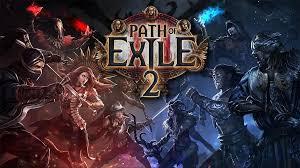The Third Edict Review PoE2 Story and Lore Analysis

As the community eagerly awaits the launch of Path of Exile 2, a significant portion of the player base finds itself in a state of curious anticipation. The promises of a slower, more tactical combat system and a complete overhaul of itemization have created a divide between excitement and skepticism. For many, including myself, who feel more like a "tourist" in the current hyper-speed meta of Path of Exile, the question remains: what will this new experience actually feel like? A private league, The Third Edict (TTE), has emerged as a surprisingly accurate and compelling answer, offering a tangible proof of concept for the very design philosophies that will define PoE2. For players tracking their journey, the role of PoE 2 Currency in progression could become more meaningful than ever before.
The most immediate and profound change experienced in The Third Edict is the pace of combat. The modern Path of Exile experience is often characterized by clearing multiple screens of monsters in a single click, where player defense is a binary state of either being immortal or being instantly one-shot. TTE dismantles this paradigm entirely. My journey through its campaign and early maps was a lesson in humility and tactical awareness. Every pack of monsters, even common white mobs, presents a genuine threat that demands respect and careful positioning.
This slower pace fundamentally alters the gameplay loop in several key ways:
- Monster Lethality: Monsters hit hard and have significantly more health, preventing players from simply steamrolling content and forcing engagement with mechanics.
- The Importance of Movement: Manual dodging becomes a survival necessity from the very first zone, turning combat into a dance of positioning and timing.
- Reduced Player Power Scaling: Exponential power curves are replaced with more linear progression, making each upgrade feel earned rather than inevitable.
- Clarity in Combat: Slower pacing allows clear visibility of enemy actions, transforming chaotic particle effects into readable, reactive encounters.
From the perspective of a PoE2 tourist, this is exactly the kind of engaging, moment-to-moment gameplay that has been promised. It feels less like a passive numbers game and more like a true action RPG, where execution skill matters as much as build planning.
Perhaps even more impactful than the combat is TTE's complete overhaul of loot and itemization. In the base game, strict loot filters hide almost all drops due to the sheer quantity of irrelevant items. TTE reverses this by drastically reducing loot quantity but greatly increasing its potential quality and relevance.
The feeling of a rare item dropping is transformed into a moment worth pausing for. Instead of ignoring dozens of items, you stop to identify each rare because there’s a genuine chance it could be a meaningful upgrade. This design brings back the classic loot-hunting magic, where every identified piece holds promise. My progression was marked by memorable finds—a pair of boots with movement speed and resistances, a weapon with strong physical damage—that each felt significant.
Comparison of Loot Philosophies
| Feature | Standard Path of Exile | The Third Edict (PoE2-like) |
|---|---|---|
| Loot Quantity | Massive loot explosions requiring strict filters. | Reduced drops, each more visible and significant. |
| Item Identification | Often skipped; focus on specific high-tier bases. | Core part of the loop; most rares worth reading. |
| Upgrade Frequency | Frequent minor upgrades until major spikes. | Less frequent but far more impactful upgrades. |
| Role of Rares | Mostly vendor trash; few usable. | Major source of gear progression. |
Crafting also sees a significant shift. In standard Path of Exile, crafting often feels like a high-risk activity reserved for elite players with vast currency reserves. TTE makes crafting approachable, focusing on improving good items rather than creating perfect ones from scratch. If you find a strong helmet with three great modifiers but one useless stat, the system offers deterministic ways to fix it. This empowers average players and integrates crafting naturally into progression rather than leaving it as an endgame-only pursuit.
Boss encounters in TTE are designed as mechanical duels rather than raw DPS checks. You cannot simply overpower and instantly phase bosses; instead, you must learn attack patterns, identify safe zones, and execute strategies over longer fights. Each victory feels earned, and even rare map monsters become mini-bosses with unique modifier combinations that demand respect.
Playing The Third Edict as a PoE2 tourist has been revealing. It shows that deep customization, engaging combat, and meaningful loot can thrive in a slower, more deliberate framework. The question remains whether the broader community, accustomed to the fast-paced meta, will embrace this change. For those seeking a more tactical ARPG experience, TTE offers a glimpse of what could be a genre-defining evolution. If Path of Exile 2 can capture this spirit and pair it with the polish of a new engine, it may not only succeed but set a new benchmark for action RPGs—a journey where players may even be motivated to buy PoE 2 Currency to enhance their adventure.
- Art
- Causes
- Crafts
- Dance
- Drinks
- Film
- Fitness
- Food
- Jogos
- Gardening
- Health
- Início
- Literature
- Music
- Networking
- Outro
- Party
- Religion
- Shopping
- Sports
- Theater
- Wellness


